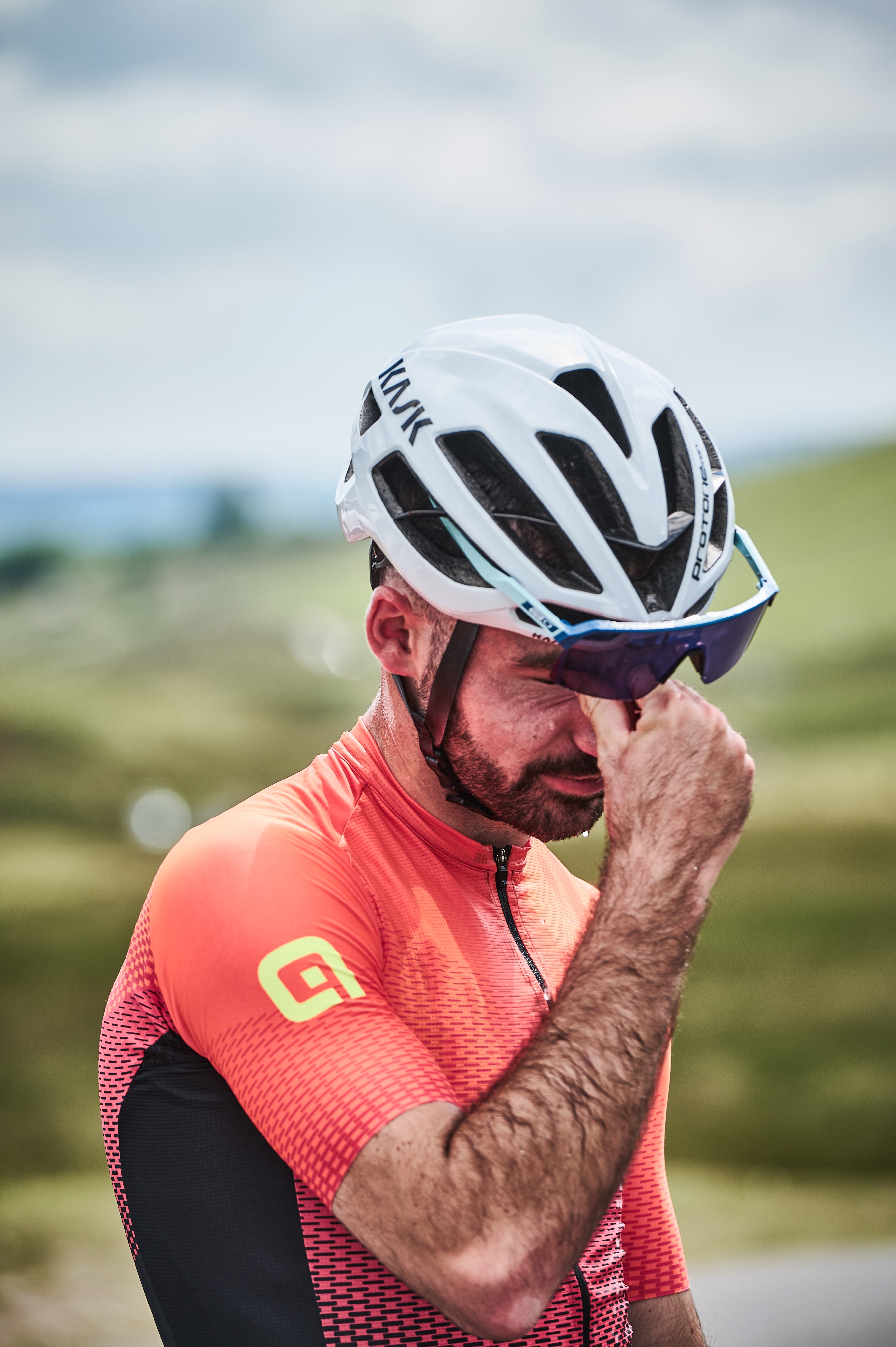
RED-S, or relative energy deficiency in sport, was formerly referred to as the ‘female athlete triad’, as initially it was thought to affect only women. However, it’s now understood that RED-S is prevalent among men and women, especially in sports like cycling that have high metabolic demands, combined with aesthetic and performance-related goals.
“Cyclists are particularly susceptible due to the intense and prolonged energy expenditure involved in their training and competition routines,” explains hormones specialist Dr Nicky Keay.
What are the warning signs?
One of the earliest signs of RED-S is a noticeable decline or plateau in performance, often accompanied by unintentional weight loss. “For women, a key indicator might be the loss of their menstrual cycle,” says dietitian Laura Kunces. “This typically manifests after a few months of sustained low energy availability [under-fuelling]. Other symptoms can include frequent illnesses, recurrent injuries, gastrointestinal issues such as constipation, and mood changes, increased irritability, depression, or anxiety.” These symptoms can be subtle at first and are often overlooked because the body is very adept at maintaining homeostasis, even under stress.
If left untreated, RED-S can lead to serious long-term health problems, including osteoporosis from decreased bone density and cardiovascular issues. “Another significant concern is infertility, as prolonged energy deficiency can impact reproductive health,” warns Kunces. “Athletes need to consider not just their immediate performance but also their long-term health, including life after their competitive career.”
What does the research say?
The concept of the ‘female athlete triad’ dates from the 1990s, and more recent studies have highlighted the prevalence of RED-S among cyclists, revealing significant concerns for both health and performance. A 2022 review of the literature emphasises that female athletes, especially those involved in endurance sports like cycling, are at heightened risk from RED-S. This relates to the energy demands of their training and the potential consequences, including menstrual dysfunction and bone density loss. “Our study, quoted in the updated IOC consensus statement on RED-S 2023, involved competitive male cyclists and showed that low energy availability (LEA) causes low testosterone levels, poor bone health and impaired cycling performance,” explains Dr Keay. “Interventions targeting nutrition and off-bike weight-bearing exercise can reverse the effects of RED-S and regain performance.”
How to avoid it
The key benefit of understanding RED-S is being empowered to avoid it. The first step is appreciating the importance of proper nutrition and energy balance. Education is key: athletes need to ensure calories burnt are effectively replaced, adequately fuelling their bodies in the long term. This encompasses not only quantity and quality of food but also the timing. For instance, eating a snack 30 minutes before a ride or having a small meal before bed can significantly help avoid deficits. It’s also crucial to regularly monitor performance, mood and weight to catch any negative trends early. Consistent fitness testing throughout the season, rather than just once a year, helps to track how the body responds to different training loads and dietary changes.

If RED-S is suspected, blood tests should be ordered, including thyroid function (especially T3 – a good indicator of energy availability), reproductive hormones (testosterone in men and oestrogen in women), and possibly iron levels, B12, and vitamin D. These tests can help confirm the diagnosis and rule out other medical conditions. In some cases, a DEXA scan might be recommended to assess bone health. For a comprehensive assessment, consult a sports doctor and dietitian. Blood tests might reveal low iron or B vitamin levels. Additionally, psychological evaluations and questionnaires such as LEAF-Q can help in identifying RED-S. Ultimately, a diagnosis should combine these elements, rather than relying on a single test.
What are the limitations?
Diagnosis of RED-S isn’t an exact science – even blood test results can be skewed by other ailments. Prevention of RED-S involves balancing training with sufficient energy intake and adequate recovery. “It’s important to fuel your body not just during training but throughout the day, ensuring you’re consuming enough calories to support both exercise and everyday functions,” says Dr Keay. “Keeping a training diary, along with notes on recovery and how you feel day to day, can help you identify any patterns of excessive fatigue or performance dips that might suggest an energy deficiency. Ensuring proper sleep, varied training – including proper, ‘do-nothing’ rest days – and strength training can also help to maintain a healthy balance.”
Conclusion
Elite riders undergo regular health checks and nutritional assessments throughout the season. Hard-training amateurs may want to consider keeping a training and nutrition journal, which can help track changes over time and spot early signs of RED-S. “It’s all about being in tune with your body and understanding that performance today is linked to what you’ve eaten over the past several months – your long-term health and well-being,” insists Laura Kunces.







